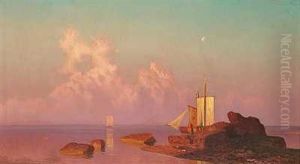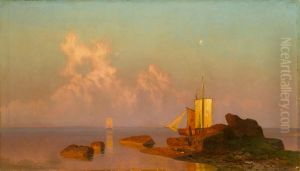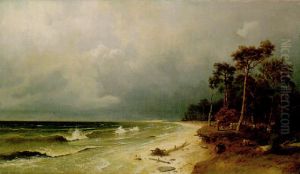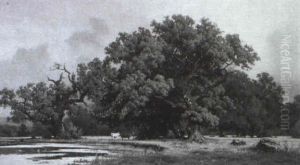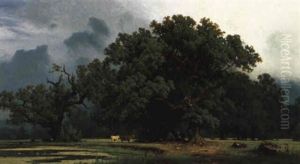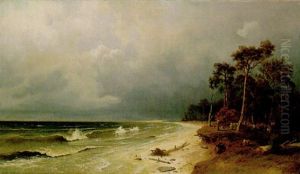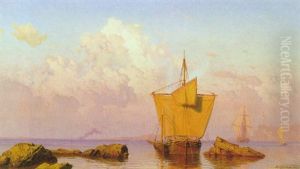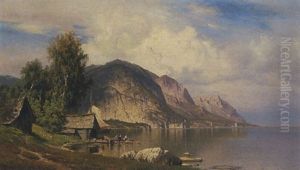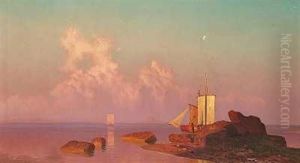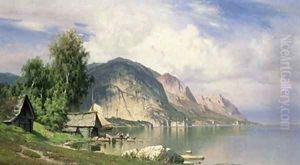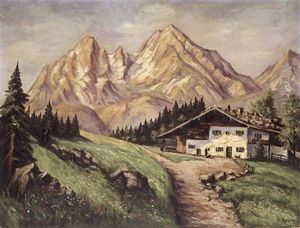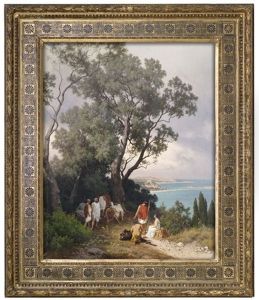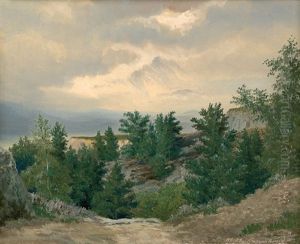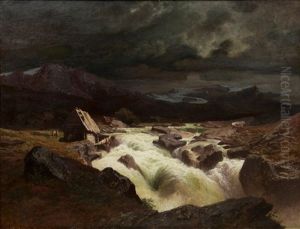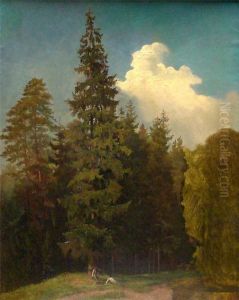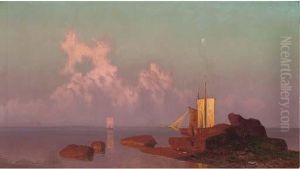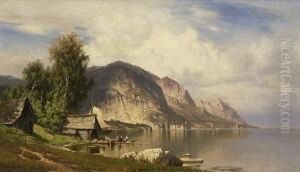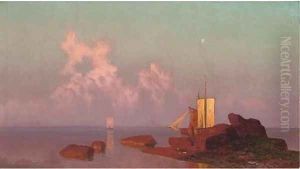Hugo Knorr Paintings
Hugo Knorr was a German artist known primarily for his landscape paintings. Born on March 5, 1845, in Weimar, Germany, Knorr demonstrated artistic talent at a young age. He was a part of the late 19th-century European art scene, during a period that experienced a transition from traditional academic art to more modern movements. However, Knorr's work remained largely within the realm of traditional landscapes, capturing the beauty of the German countryside as well as other European locations.
Knorr received his formal art education at the Weimar Saxon-Grand Ducal Art School, where he studied under the guidance of well-known artists such as Charles Verlat and Paul Thumann. His education was typical of the time, focusing on the technical aspects of painting and drawing, and providing a foundation in classical art techniques.
Throughout his career, Knorr traveled extensively, finding inspiration in the diverse landscapes of Europe. He spent significant time in Italy, where the light and scenery had a notable impact on his work. Knorr's paintings often featured the rolling hills, dense forests, and serene waterways that typify much of the Central European landscape. His work is characterized by a keen attention to detail, a rich color palette, and the ability to capture the changing effects of light on nature.
Though not as widely known today as some of his contemporaries, Knorr's work was appreciated in his time, and he enjoyed the patronage of various art collectors and enthusiasts. His paintings were exhibited in numerous art shows and galleries across Europe, and he was part of a community of artists who sought to preserve and celebrate the natural beauty of the landscape through their art.
Hugo Knorr's artistic legacy lies in his dedication to the landscape genre and his role in the broader tapestry of 19th-century European art. His paintings continue to be admired for their tranquil beauty and mastery of traditional landscape painting techniques. Knorr passed away on June 18, 1904, in Munich, Germany, but his work remains a testament to his skill and his love for the natural world.
